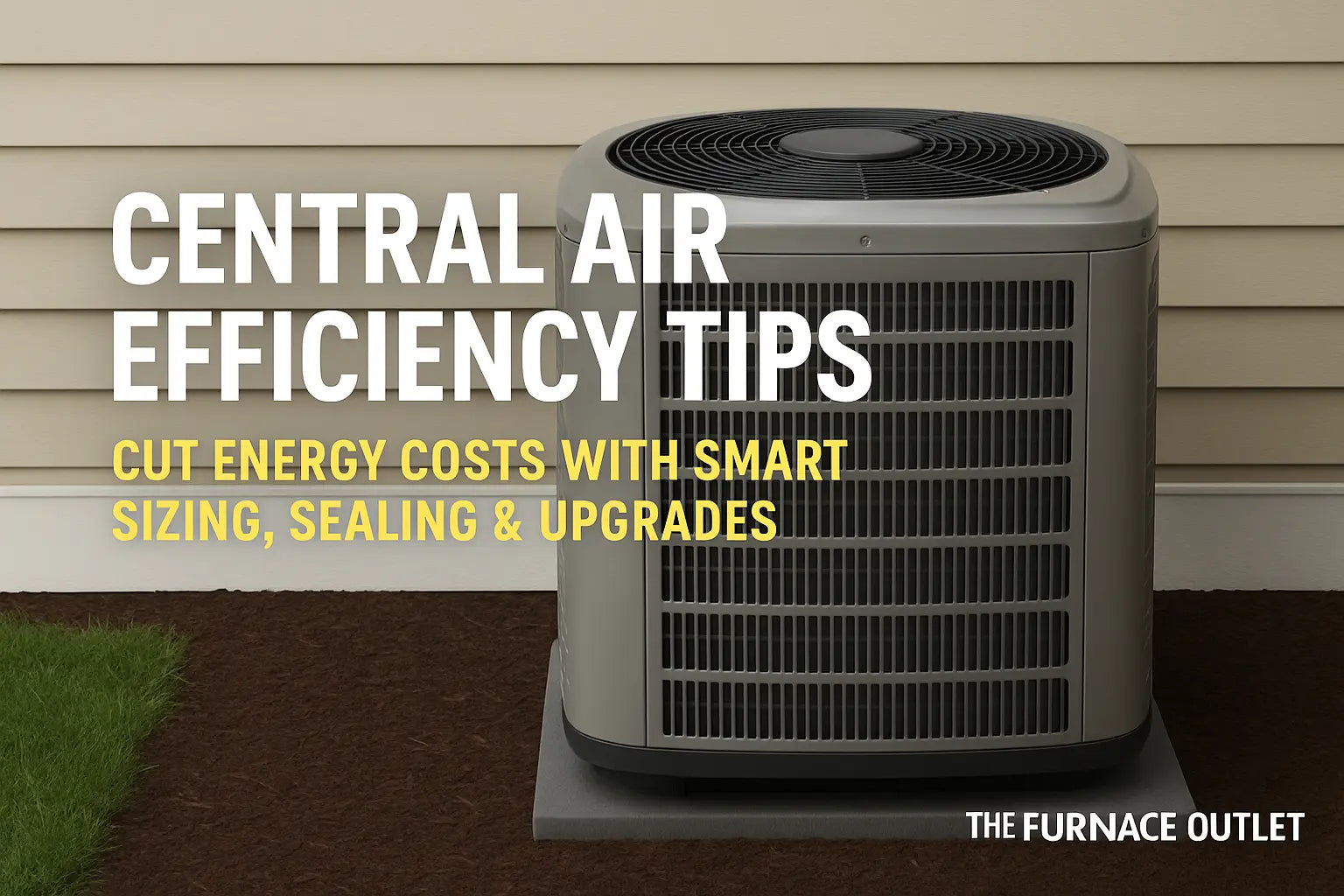Key Takeaways
-
Average 2025 install: $5,000–$7,800 for a 2,000 ft² home.
-
Unit cost: $1,000–$8,500 (size and SEER2 affect price).
-
Labor runs $1,000–$3,500 based on complexity and location.
-
Permits: $75–$800—check local rules.
-
Extras like ductwork or smart thermostats can add $500–$2,000+.
-
Manual J ($250–$500) helps avoid overspending on the wrong size.
Why Central Air Costs Still Surprise Homeowners
Sticker shock is common because “price” hides many parts: the equipment, the people installing it, and the unseen prep work. In 2025, supply-chain bumps have leveled off, yet regional labor rates—from $50 /hr in the Midwest to $120 /hr on the coasts—keep totals unpredictable. A Manual J load calculation tells you the right tonnage so you don’t overpay for oversized equipment or higher power bills later. Think of it like buying sneakers: your exact size prevents blisters and wasted money. Reading a primer such as What to Know About Central Air Conditioners can prevent unpleasant surprises.
Get an accurate Manual J quote by photo to avoid oversizing your system.
The AC Unit Itself: Size, Brand, and SEER2
The biggest line-item is the outdoor condenser and indoor coil/air handler. A one-ton unit starts near $1,000, while a premium five-ton, 18 SEER2 model can top $8,500. Why the spread? Bigger houses need more cooling tons, and high-SEER2 parts—larger coils, variable-speed compressors—cost more to build. Yet a 16 SEER2 system typically cuts annual power use by 15 % versus the older 13 SEER models they replace. For a deeper dive on why SEER2 replaced the old SEER test in 2023, skim SEER2 Explained.
Shop high-efficiency R32 condensers for better long-term savings.
Labor Charges: What the Pros Do for Their Paycheck
Installation labor runs $1,000–$3,500 because technicians do more than “plug it in.” They recover old refrigerant safely, set the new condenser on a pad, braze copper lines, pressure-test for leaks, evacuate to 500 microns, charge with precise refrigerant weight, and balance airflow. Extra time is needed when access is tight (attics, crawlspaces) or when new breaker runs are required. Skilled labor may feel pricey, but a bad braze joint or low charge can shave years off a compressor—repairing that later costs far more.
Finance your HVAC upgrade with flexible plans that fit your budget.
Permit Fees: The Paperwork Price of Safety
Most U.S. municipalities require HVAC permits to ensure safe electrical and refrigerant work. Fees range $75–$800. Smaller towns often sit near the lower end, big-city metro areas at the top. Permits protect you: the inspector confirms the system meets code, so future home buyers (and insurers) stay happy. Save a copy in your records; it can smooth resale.
Ductwork Decisions: Repair, Replace, or Run New Lines
Duct costs are the wild card:
-
Minor repairs/sealing: $500–$2,200
-
Complete replacement: $3,000–$7,500+
Old, undersized ducts choke airflow, making a new high-efficiency unit act like a clunker. Sealing seams with mastic and adding R-8 insulation can cut energy loss by up to 30 %. If your layout changes—say, finishing a basement—new branches may be cheaper than jury-rigging old lines. See Forced Air vs. Central Air for duct basics.
Add-On Expenses That Sneak Up
A pro may suggest:
-
Manual J load calc: $250–$500 (worth it).
-
Energy audit: $150–$500; can unlock utility rebates.
-
Old unit disposal: $200–$500 (EPA rules).
-
Smart thermostat: $200–$400; shaves 8 % off bills on average.
-
Electrical panel upgrade: $500–$2,000 if your breaker box is maxed out.
Optional doesn’t mean unnecessary—ask which items improve comfort or lower lifetime cost.
Pair with a smart thermostat-compatible AC and save up to 8% more on cooling bills.
Real-World Price Examples by Home Size
|
Home Size |
Unit + Labor |
With Ductwork |
|
1,250 ft² |
$2,000–$5,500 |
$3,000–$7,000 |
|
1,750 ft² |
$2,700–$6,500 |
$4,000–$8,500 |
|
2,250 ft² |
$3,100–$7,800 |
$5,000–$12,000+ |
These ranges assume mid-efficiency (15 SEER2) equipment and typical single-story layouts. Two-story homes often need extra return ducts or zoning dampers, nudging labor upward. Want to see how systems work together? Check How Central Air Conditioning Systems Work A Beginner Guide.
Central-Air Efficiency Tips That Pay You Back
Good design beats brute force. Start with right sizing—oversized units short-cycle, wasting power and never dehumidifying properly. Next, seal duct leaks and add attic insulation to R-38 in most U.S. climates. Finally, set the thermostat up just 2 °F when you’re away; that minor bump saves about 3 % on cooling costs. More quick wins live in our HVAC Tips library, including sizing calculators and rebate finders.
Getting a Fair Quote: Your Homeowner Checklist
-
Ask for Manual J numbers.
-
Demand model numbers and SEER2 ratings.
-
Confirm permit and disposal fees are in writing.
-
Check warranty—parts and labor.
-
Schedule a duct-leak test.
Need a wider background before signing? See Consumer Guide: Choosing the Best Central Air System for step-by-step worksheets.
Frequently Asked Questions
Q: What is SEER2, and why does it affect price?
A: SEER2 is the new 2023 efficiency test that mirrors real-home duct pressure. Higher SEER2 units cost more up front but lower monthly bills.
Q: Can I reuse my old thermostat?
A: Yes, if it’s compatible with your new system’s stages and voltage. Many homeowners upgrade to a smart model for better savings.
Q: How long does a typical install take?
A: One day for a straight swap, two to three days if ducts or electrical work are extensive.
Q: Do I really need a permit?
A: In nearly every U.S. city—yes. Skipping it risks fines and voids warranties.
Q: What’s the quick way to lower cooling bills after installation?
A: Change the filter every 30 days during heavy use, seal supply ducts, and raise the thermostat a couple of degrees when away.







